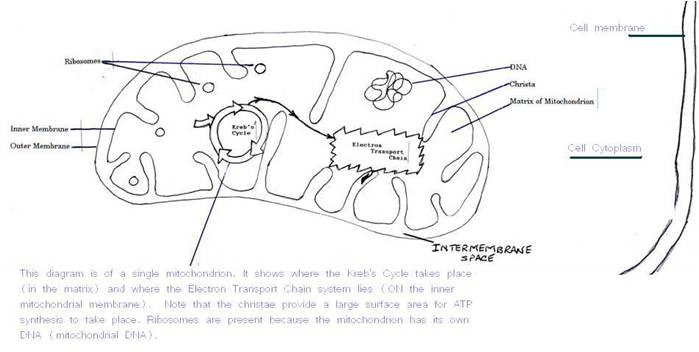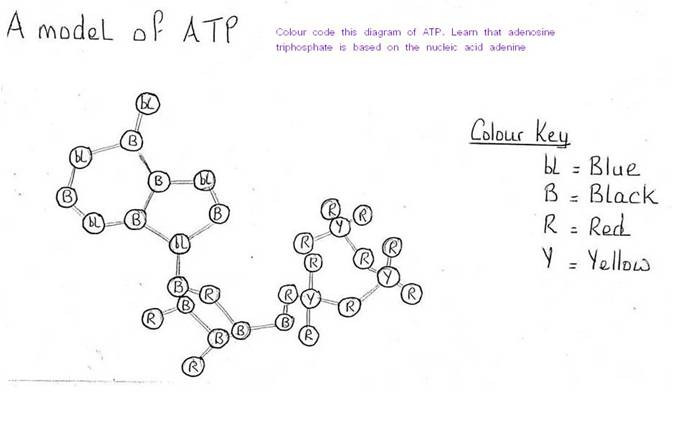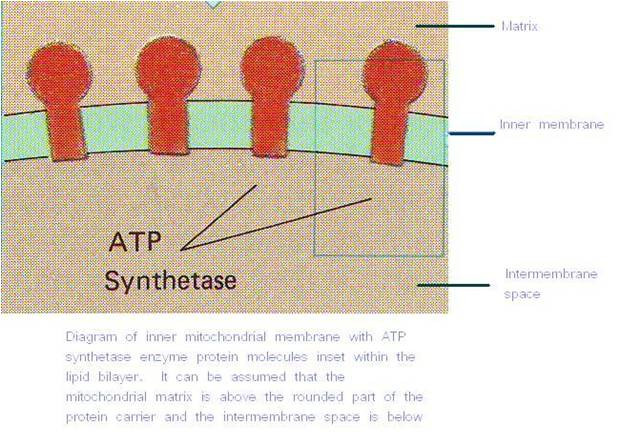The mitochondrion is the organelle where most of ATP production occurs. See diagram below

Glycolysis takes place in the cell cytoplasm
Words to go with Glycolysis:
- Pyruvate
- Pyruvic acid
- Oxidation
- Dehydrogenase
- Energy substrates (glucose, lipids, proteins)
- Phosphate
- ATP
- ADP

ATP (adenosine triphosphate) The Universal energy Molecule
The Link Reaction takes place between the cytoplasm and the mitochondrion
The Kreb’s Cycle takes places in the matrix of the mitochondrion
Words to go with The Kreb's Cycle (aka The Citric Acid Cycle)
- Citric acid cycle
- CO2
- FADH2
- NADH + H+
- NAD+
- Acetyl CoA – formed in the mitochondrion from pyruvate
Oxidative Phosphorylation (Electron Transport Chain or ETC) takes place in the inner mitochondrial membrane
It uses the inner mitochondrial membrane which faces the inter-membrane space of the mitochondrion.
It uses both the intermembrane space on one side and the matrix of the mitochondrion on the other side, to form a concentration gradient for H+ ions (= protons).

Protein channels allow H+ ions (protons) to move from where they are at a higher concentration to where they are at a lower concentration.
So, when H+ ions (protons) are at a higher concentration in the matrix but at a lower concentration in the intermembrane space, they move through the protein channels into the latter.
This means that H+ ions (protons) are then at a higher concentration in the intermembrane space! What happens? They move back into the matrix, via a protein channel, because the concentration gradient has reversed.
The channel protein is actually ATP synthase – it’s trapped in the inner membrane and there are so many of them, they can be captured on film using an electron microscope.
It’s like a shuttle of back and forth across the inner membrane space.
Words to go with ETC:
- Intermembrane space
- Matrix
- Chemiosmosis
- Proton pumps
- Concentration gradient
- ATP synthase
- Carrier molecules
- Oxidation
- Reduction
- Cytochromes
- Transport proteins

